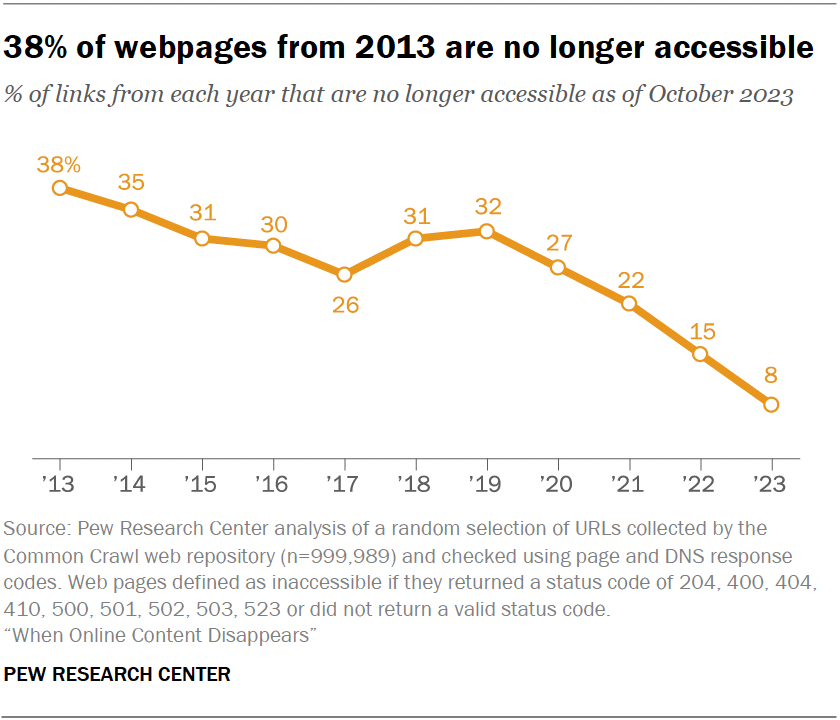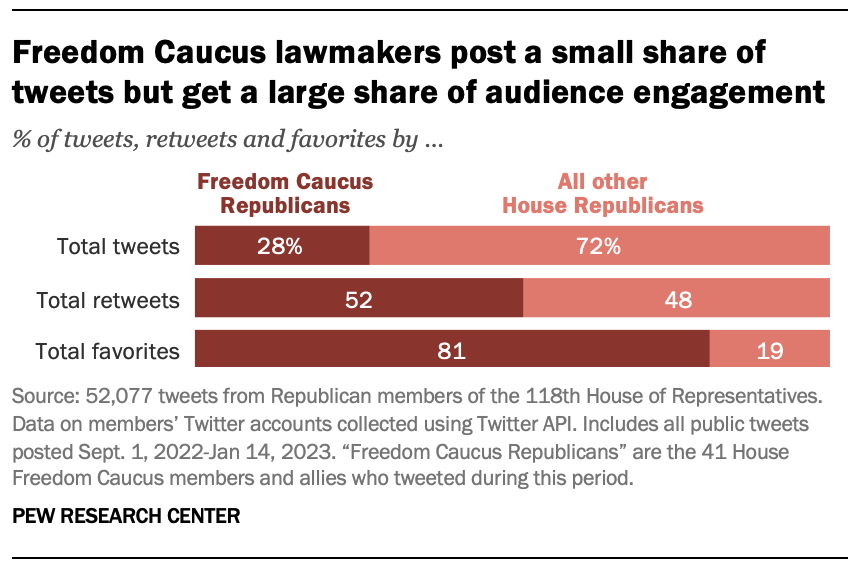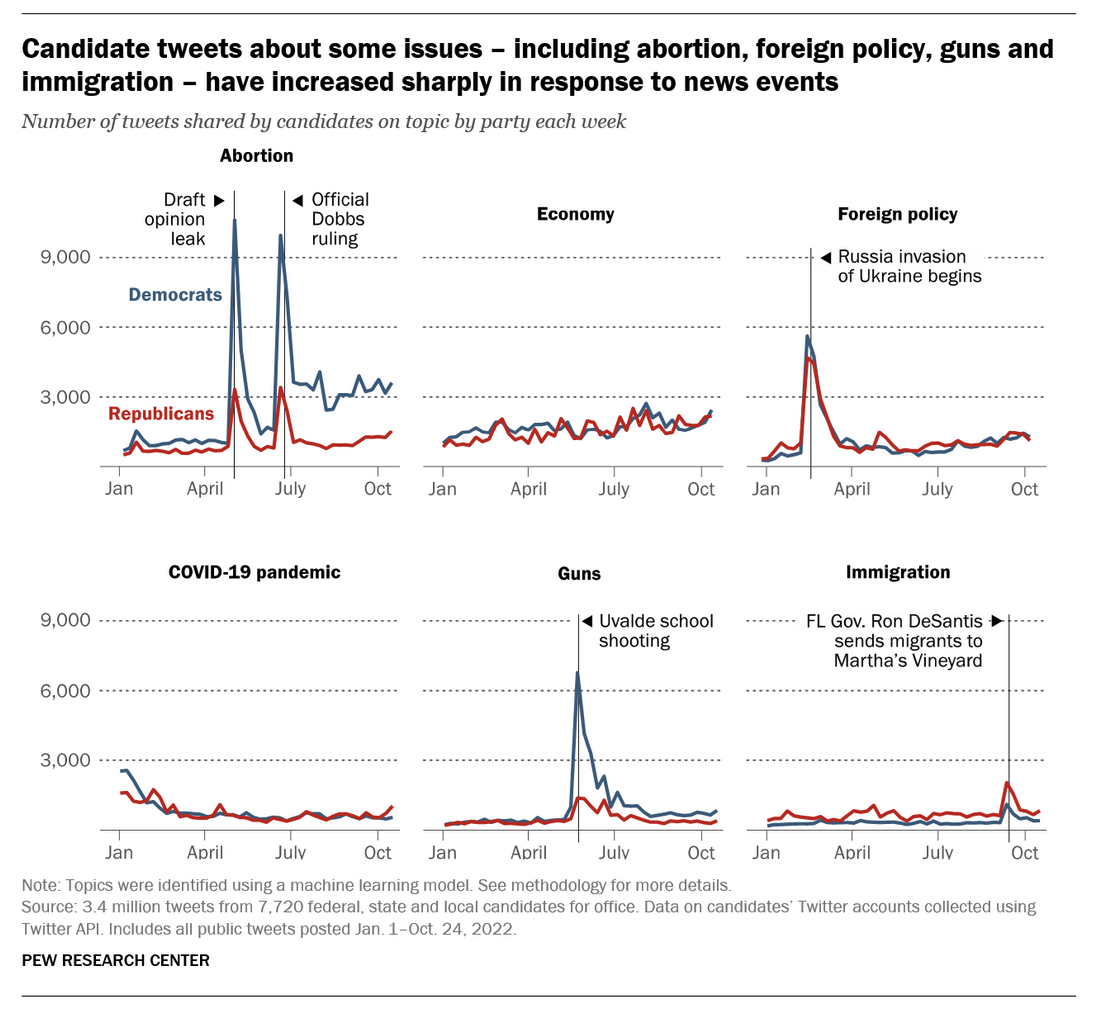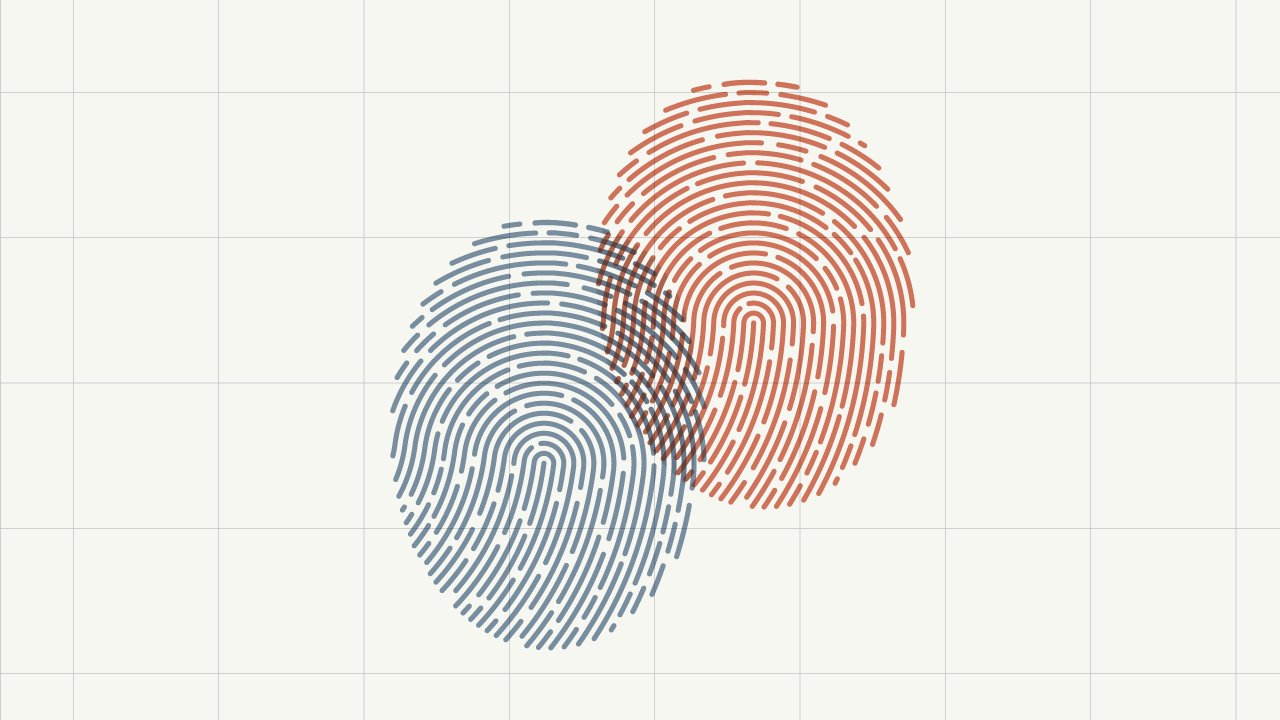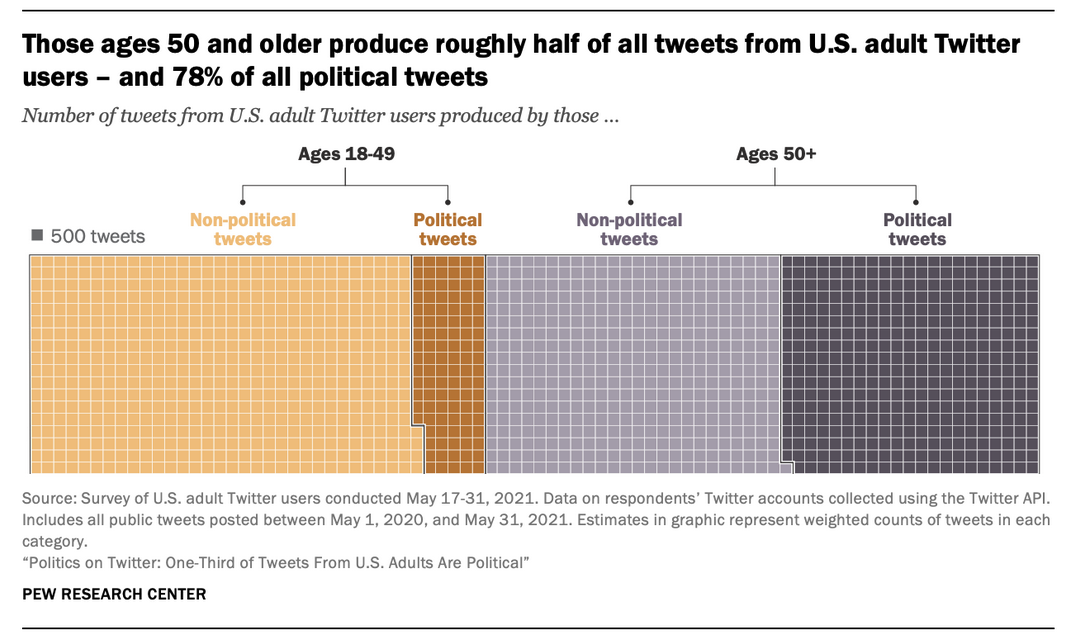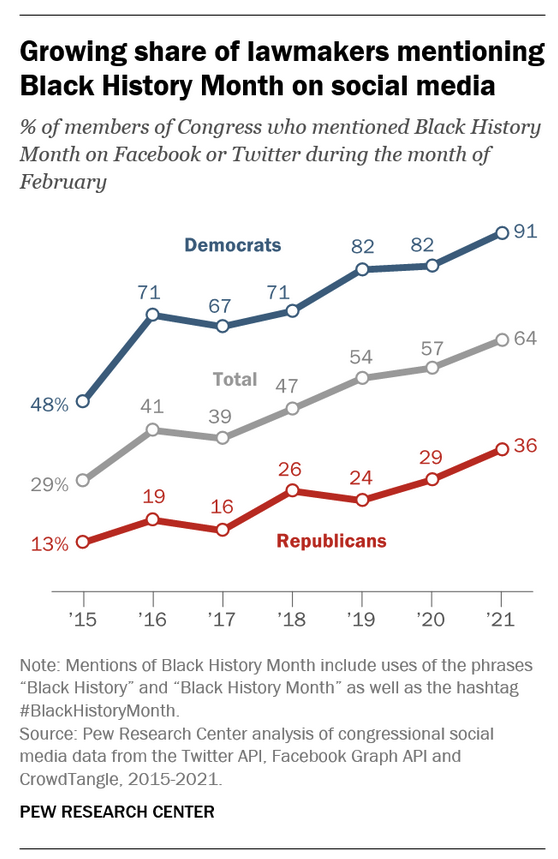Pew Research Center Publications
Who U.S. Adults Follow on TikTok
A new Pew Research Center analysis of the accounts Americans follow on TikTok highlights the centrality of internet-native content creators, prominent influencers and traditional celebrities on the popular short-form video platform. It also finds that users choose to follow far more accounts that post about pop culture and entertainment than those posting about news or politics.
Electric Vehicle Charging Infrastructure in the U.S.
A Pew Research Center survey paired with an analysis of U.S. Department of Energy data finds that roughly six-in-ten Americans now live within 2 miles of a public charger. There were over 61,000 publicly accessible electric vehicle charging stations in the United States as of February 2024. The vast majority of EV charging occurs at home, but access to public infrastructure is tightly linked with Americans’ opinions of electric vehicles themselves. Our analysis finds that Americans who live close to public chargers view EVs more positively than those who are farther away.
When Online Content Disappears
The internet is an unimaginably vast repository of modern life, with hundreds of billions of indexed webpages. But even as users across the world rely on the web to access books, images, news articles and other resources, this content sometimes disappears from view. A new Pew Research Center analysis shows just how fleeting online content actually is: A quarter of all webpages that existed at one point between 2013 and 2023 are no longer accessible, as of October 2023. In most cases, this is because an individual page was deleted or removed on an otherwise functional website. For older content, this trend is even starker. Some 38% of webpages that existed in 2013 are not available today, compared with 8% of pages that existed in 2023.
How U.S. Adults Use TikTok
A new Pew Research Center study matching the survey responses and on-site behaviors of U.S. adult TikTok users finds that a minority of avid posters create the vast majority of content on the site. And most users post seldom, if at all – instead using TikTok primarily to view and consume content made by others. These findings come at a time when one-third of U.S. adults say they use the site and a growing share get news there.
#BlackLivesMatter Turns 10: Social media, online activism and 10 years of #BlackLivesMatter
In July 2013, activists first used the #BlackLivesMatter hashtag to spark conversation about racism, violence and the criminal justice system following George Zimmerman’s acquittal in the shooting death of Trayvon Martin in Sanford, Florida. Ten years later, Black Lives Matter stands as a model of a new generation of social movements intrinsically linked to social media. The enduring power of the hashtag itself is clear: More than 44 million #BlackLivesMatter tweets from nearly 10 million distinct users currently exist on Twitter today, according to a Pew Research Center analysis of publicly available tweets from July 2013 through March 2023. Use of the hashtag has fluctuated over the years, often in response to instances of police violence against Black Americans. And perhaps no event is more directly tied to the use of the hashtag than the murder of George Floyd by Minneapolis police officer Derek Chauvin on May 25, 2020.
House Freedom Caucus on Twitter: Going negative and getting attention
The 118th Congress opened with a rare fight for the speaker’s gavel in the U.S. House of Representatives. After 15 ballots, Rep. Kevin McCarthy, R-Calif., emerged as the new House speaker, but only after he and his allies reached an agreement with a group of GOP holdouts, many of whom are affiliated with the House Freedom Caucus. A number of lawmakers affiliated with the House Freedom Caucus have made social media a core component of their communication strategies. And a new Pew Research Center analysis finds that these GOP legislators use Twitter in distinctive ways. They are more likely than other House Republicans to use negative language and to address certain topics in their tweets, and they draw a disproportionately large share of all the audience engagement that House Republicans collectively receive on Twitter.
As the 2022 campaign draws to a close, here’s how federal, state and local candidates have used Twitter
As Election Day draws closer, candidates for office at the federal, state and local level are competing for the support of the voting public both online and off. A new Pew Research Center analysis of more than 8,000 candidate Twitter accounts nationwide finds that the online campaign is in full swing. Since the start of the year, candidates for office at all levels of government have shared almost 3.4 million tweets, including nearly 14,000 tweets per day in October. Here are some of the key themes in how candidates have used Twitter during their 2022 campaigns:
5 facts about political tweets shared by U.S. adults
In the months before and after the contentious 2020 election, one-third of tweets from U.S. adults were about politics or political issues, according to a new Pew Research Center report. But what about the content and nature of these posts, such as when they were most prevalent on the site, or the terms that most distinguished political from nonpolitical tweets? Here are five facts about political content on Twitter, based on the Center’s analysis of almost 1 million English-language tweets from U.S. adults posted between May 1, 2020, and May 31, 2021.
Analyzing text for distinctive terms using pointwise mutual information
When examining a collection of texts, researchers often want to get a sense of the differences in how certain words or phrases are used by different groups. For example, if we’re examining a collection of books, we might be interested in identifying phrases that distinguish particular authors or genres from one another. Similarly, if we’re looking at social media posts from members of Congress — to cite an actual line of research at Pew Research Center — we may want to hunt for linguistic patterns that distinguish Republicans from Democrats. In this post, we’re going to look at open-ended survey responses and attempt to identify words that distinguish different demographic groups in the United States from one another.
Politics on Twitter: One-Third of Tweets From U.S. Adults Are Political
Roughly one-quarter of American adults use Twitter. And when they share their views on the site, quite often they are doing so about politics and political issues. A new Pew Research Center analysis of English-language tweets posted between May 1, 2020, and May 31, 2021, by a representative sample of U.S. adult Twitter users finds that fully one-third (33%) of those tweets are political in nature. Echoing the Center’s findings in its prior studies of tweeting behavior, whether political or otherwise, the vast majority of these political tweets are produced by a minority of users. And certain demographic groups are especially active contributors to the overall volume of political content on Twitter. Most notably, Americans ages 50 and older make up 24% of the U.S. adult Twitter population but produce nearly 80% of all political tweets. And 36% of the tweets produced by the typical (median) U.S. adult Twitter user age 50 or older contain political content, roughly five times the share (7%) for the tweets from the typical 18- to 49-year-old.
More members of Congress, especially Democrats, are talking about Black History Month on social media
A growing share of congressional lawmakers have taken to social media each February to commemorate Black History Month, according to a Pew Research Center analysis of their Facebook and Twitter activity. Nearly two-in-three members of Congress (64%) mentioned Black History Month on Facebook or Twitter in February 2021, up from just 29% in 2015.
Selected Academic Research
Messaging and mobilization: Rebel groups, social media communication, and audience engagement
Mobilization is central to the emergence, survival and success of armed groups challenging the state, and has lately expanded to new arenas with the rise of social media. Using a new dataset of rebel group Twitter use, we examined the topics contained in rebel group social media communications to understand how different messaging strategies impact civilian engagement with rebel messages. Rather than benefiting solely from direct calls to action, we found that rebel groups also increased civilian engagement through indirect messages of self-promotion. While direct appeals received more engagement than indirect appeals, their effects were tempered by audience fatigue when relied on too heavily. We additionally found that including images further enhanced the impact of a mobilizing message. These findings expanded our understanding of rebel communications and mobilization, with important implications for combating the use of social media as a recruitment tool for violent extremism.
Sentiment is Not Stance: Target-Aware Opinion Classification for Political Text Analysis
Sentiment analysis techniques have a long history in natural language processing and have become a standard tool in the analysis of political texts, promising a conceptually straightforward automated method of extracting meaning from textual data by scoring documents on a scale from positive to negative. However, while these kinds of sentiment scores can capture the overall tone of a document, the underlying concept of interest for political analysis is often actually the document’s stance with respect to a given target—how positively or negatively it frames a specific idea, individual, or group—as this reflects the author’s underlying political attitudes. In this paper, we question the validity of approximating author stance through sentiment scoring in the analysis of political texts, and advocate for greater attention to be paid to the conceptual distinction between a document’s sentiment and its stance. Using examples from open-ended survey responses and from political discussions on social media, we demonstrate that in many political text analysis applications, sentiment and stance do not necessarily align, and therefore sentiment analysis methods fail to reliably capture ground-truth document stance, amplifying noise in the data and leading to faulty conclusions.
Political research with social media data
Social media data promise detailed, granular, “always-on” measures as well as the ability to observe behaviors of interest directly rather than through the lens of survey instruments or news reporting. However, actually conducting political research with social media data is rarely straightforward, and measures derived from social media can be subject to several issues of validity and reliability that can limit their usefulness or, at worst, lead to faulty inferences. This chapter pursues two parallel goals: to provide researchers with context in their consideration of whether or not it makes sense to use social media data in their own research, and to provide practical advice on how to go about conducting a research project that relies on social media data.
The Effects of an Informational Intervention on Attention to Anti-Vaccination Content on YouTube
The spread of misinformation related to health, especially vaccination, is a potential contributor to myriad public health problems. This misinformation is frequently spread through social media. Recently, social media companies have intervened in the dissemination of misinformation regarding vaccinations. In the current study we focus on YouTube. Recognizing the extent of the problem, YouTube implemented an informational modification that affected many videos related to vaccination beginning in February 2019. We collect original data and analyze the effects of this intervention on video viewership. We find that this informational intervention reduced traffic to the affected videos, both overall, and in comparison to a carefully-matched set of control videos that did not receive the informational modification.
#rebel: Rebel communication strategies in the age of social media
How have rebel communication strategies been shaped by the increasingly social nature of the internet and the constant changes of information and communication technology in a Web 2.0 world? Rebel groups’ ability to disseminate a message has previously been constrained by the size of the audience they could reach through traditional technologies and the costs of those technologies. Emerging social internet platforms change this dynamic by providing rebel groups with new opportunities to build and communicate to an audience. Scholars have theorized about how rebel groups adapt to these new opportunities, but to date, little systematic analysis into the phenomenon has been conducted. In this project, we present a new dataset on rebel group Twitter use and use the data to examine how armed groups use social media to communicate, the topics contained in those communications, and the audiences that consume them. Through a richer understanding of the ways in which rebel groups communicate we are better able to measure the impact of new information technologies on armed conflict in the future.


